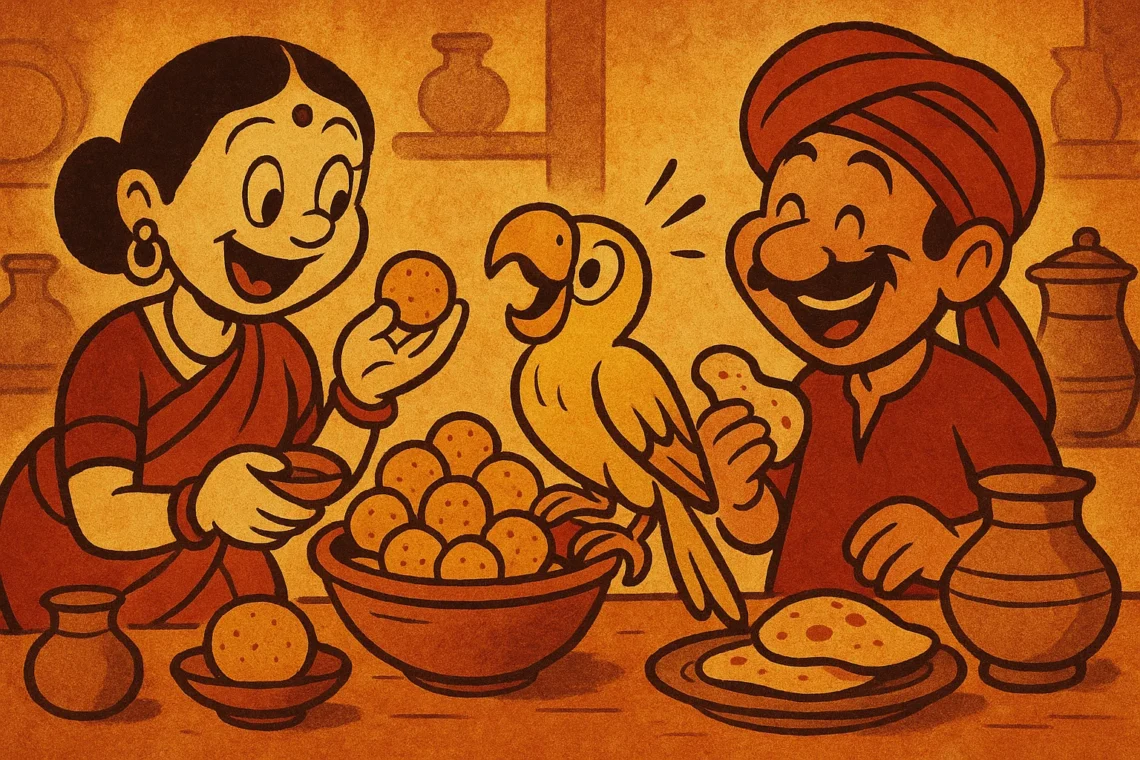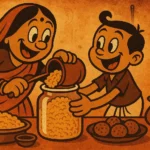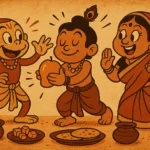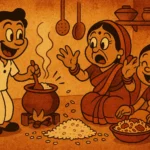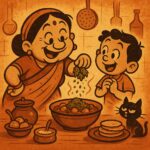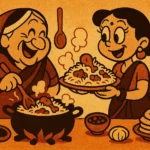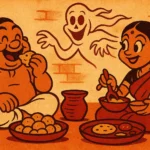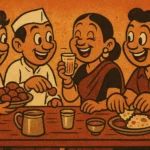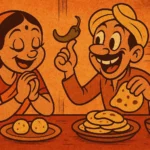Somewhere between the bedtime story and the last sip of milk, there was always a parrot. Not just any parrot—that parrot. Bright green, red-beaked, with an opinion about everything. Sometimes it recited the Ramayana. Sometimes it tattled on the princess. Sometimes it solved riddles, mocked villains, or refused to speak unless bribed. But what I always remembered most wasn’t what the parrot said. It was what the parrot ate.
“The parrot sat on the princess’s shoulder, nibbling on pomegranate seeds.” “The parrot demanded soaked almonds before it would share its wisdom.” “The parrot flew off in a huff when offered plain roti instead of sweet rice.” These weren’t just passing details. They were personality. The bird had taste. The bird had a menu. And through its snacks, it became something more than just a plot device—it became a guest at the dinner table of my imagination.
The Avian Gourmet
In those old stories—told by grandmothers, scribbled in Amar Chitra Katha panels, passed down like old brass—parrots ate well. They didn’t peck at generic birdseed. They were given mango slices, sugarcane juice, ghee-laced treats, and cardamom-dusted fruit. They ate like picky royals, like small green gods who knew that food was about respect. You couldn’t win a parrot’s trust without feeding it something special. And if you fed it right, it might just tell you the truth about your destiny.
I used to imagine these parrots living in palaces, lounging in gold cages, chirping demands while some weary minister tried to figure out whether to feed them banana halwa or puffed rice today. They were clever. Discerning. Emotional. They were, essentially, aunties in feathered form.
The Language of Snacks
In hindsight, the parrot’s food was never just food. It was a code. Parrots in stories rarely ate when things were tense. “The parrot stopped eating.” That was how you knew something was wrong. But when the kingdom was restored, when the lovers reunited, when the prince learned humility—the parrot would peck happily again. Its appetite was a barometer. A little green emotional compass.
My grandmother would sometimes pause while telling a story and add, “Aur tota ne mithai khayi.” The parrot ate sweets. That was the cue. The world was okay again. Justice had been served. Or at least, dessert had.
Real Parrots, Real Food?
Of course, real parrots don’t eat laddoos. I know that now. But as a kid, that didn’t matter. The parrot was real in the way stories are real. Its food said something about how we valued taste, reward, generosity. It taught us that even magical birds needed a good meal. That wisdom came with a price—and the price was usually soaked cashews or bits of guava sprinkled with kala namak.
And isn’t that just so wonderfully desi? Even in fantasy, no one talks for free. Especially not a parrot.
Now, When I Eat Fruit…
Sometimes, when I break open a pomegranate or slice mango too neatly, I think of those parrots. When I see a bowl of soaked almonds on someone’s table, I smile a little. Somewhere deep in my mind, a part of me is still waiting for the parrot to show up. To hop over, click its beak, and tell me the next chapter—provided I feed it something worth its while.
Because in the old stories, food wasn’t just for humans. It was for gods, animals, spirits, and birds who spoke in riddles. And if you fed them well, they might just tell you how the story ends.
Born in Mumbai, now stir-frying feelings in Texas. Writes about food, memory, and the messy magic in between — mostly to stay hungry, sometimes just to stay sane.

